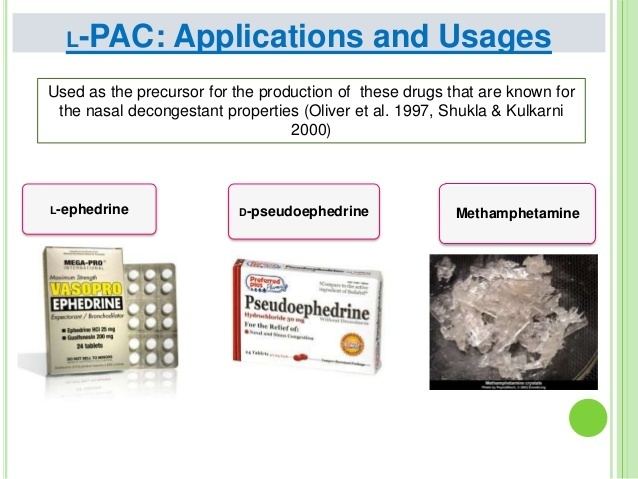Don't see much outlining the details of this reduction usually so this is some good info. It's amazing to see almost 2 decades of research become reality.
~~~~~~~~~~HOW EARTH PEOPLE DO IT~~~~~~~~~~~~
If your nitemares never include metalic voices coming over loudspeakers
demanding that you throw out your five gallon plastic buckets and come out with
your hands up, congratulations...you may be on Earth.
Earth people find many wonderful uses for the humble five gallon plastic bucket, as we shall soon see.
Any earth native who wishes to produce L-PAC at home may discover these utilitarian devices to be worth well more than their wieght in gold.

Ephedrine repeated additions NaBH4
First, the citrate buffer is made from
-6g NaOH and
-22g of citric acid in 1l dH2O, resulting in a mixture of trisodium citrate and citric acid.
This is the liquid in which we are going to work.
We also need to prepare the alginate beads in advance.
Best to prepare a
-4% sodium alginate solution(heat and stir for a long time, it is badly soluble), and it is best
to make a lot of it in advance to keep as stock solution.
Then we suspense
-two 42g packs of fresh yeast in
-50ml of warm water until it is homogenous, and add
-50ml of the alginate solution to it, mix well and load it in a dropping or separator funnel.
-1l of 5% CaCl2 solution is prepared and stirred, the yeast/alginate suspension then dropped into it, forming
globules/pearls, or if something goes not so well, scraps of alginate.
Doesn't matter much, as long as we can enhancement them well out and the protection for the yeast is had.
We leave the beads for two hours in the CaCl2 solution to let their shell harden.
They are enhancemented out, washed with some water and put into the 2l beaker we use for the biosynthesis.
What we need to acquire OTC from the supermarket is the fresh yeast, the citric acid,
malt extract, molasses, celite, sodium sulfate(needs to be dried) and epsom salts.
What we need to acquire online are, sodium borohydride, tween 80(polysorbate) and sodium alginate.
The latter two can, depending on the location, likely also be had OTC.
What we probably need to make ourselves are both benz- and acetaldehyde(see chapter for precursor preparation).
Solvents needed are DCM and ethanol(simply denat. 96% is fine) and IPA and acetone for the purification of the finally produced ephedrine HCl.
Needed equipment are, a 2l beaker and a bucket large enough to fit it in and a submerged aquarium heater, 500ml flask for the reduction, a few small beakers, magnetic stirrer and two separatory funnels, a 1l(they usually fit 1,5l so its fine for the broth extraction) and a 250ml one for the extraction of the reduction, and we need a large enhancement flask(1l) with a vacuum source(hand pump is fine here).
medium for fermentation
-50g yeast in alginate beads(+20g for later addition)
-1l of citrate buffer(pH 5)
-86g of malt extract
-100g molasses from sugar beet
-5g of MgSO4 heptahydrate
kept at 30° in the water bath for 2h.
substrate additions
Then, a mixture of
-9g benzaldehyde(85mmol)
-18ml of 40% acetaldehyde solution in ethanol(120mmol)
-2g of tween 80
-a bit EtOH to fill it up to 32ml
was prepared and 8ml of this mixture are given into the fermentation, spaced 1h apart.
The third addition was followed by 20g additional yeast as beads.
After the last addition, it was allowed to sit for 6h and was put in the fridge for 3h.
extraction
Then it was first decanted and the residual stuff with the beads enhancemented through celite.
There will be a visible lighter layer at the top, this is the product layer.
The smell will be reminiscent of burnt almonds instead of that initial fresh cherry/almond smell.
The brown soup was then extracted using 4x25ml of DCM and the combined organic extracts were washed with brine
and H2O(2x15ml and 1x10ml), then dried over sodium sulfate and put in the freezer or used directly.
Careful not to shake, only swirl lightly, as this will form an emulsion.
reductive amination
To the DCM were added
-50ml of denat. EtOH, the mixture was put into an ice-salt bath, and a methylamine solution was made from
-7,5g methylamine HCl(111mmol) in 50ml EtOH and
-4,4g NaOH(111mmol) in 20ml H2O, which was added at once to the cooled, stirred solution.
The imine was allowed to form over the course of an hour.
-2,5g NaBH4(66mmol) are then weighed out and added in portions to the cooled mixture, adding each portion only
after frothing stopped and the temperature(should not rise above 15-20°) is kept in control.
That is around 5 portions over the course of 10min.
The reduction is allowed to proceed for two hours, after which the reaction vessel is flooded with 100ml brine,
100ml H2O and 10ml 20% NaOH.
Phases are allowed to part, and the DCM layer is separated and saved.
The aqueous/ethanol portion is extracted twice with additional 40ml of DCM.
Combined DCM layers are now thoroughly washed with 2x40ml H20 and finally 20ml brine, then dried over sodium sulfate.
The ephedrine can now either be gassed out or titrated aqueous.
The latter was chosen because of the solubility of ephedrine HCl in DCM, and the obtained aqueous layer of
the hydrochloride salt is then evaporated to leave a crude residue.
This is now boiled in dry acetone to remove any potential discoloration(there was none), it was weighed and
amounted to 4,2g(20,8mmol or 24% from the benzaldehyde), and then it was finally recrystallised from IPA and
acetone over a few days.



